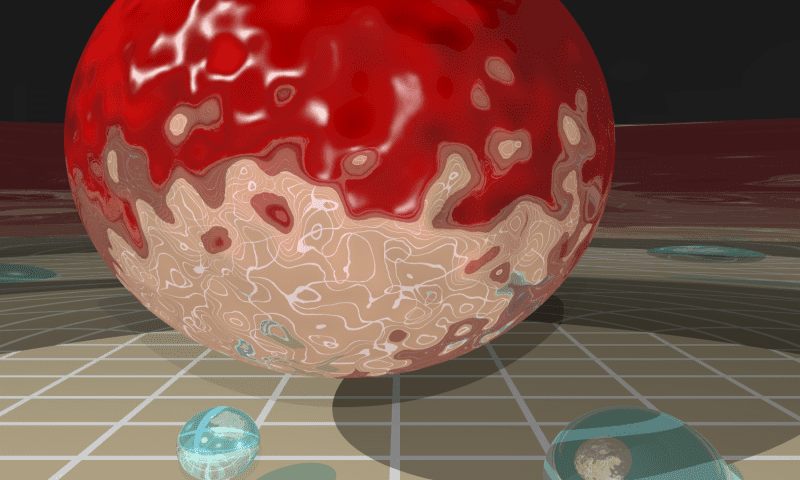
Artist impression of light trapped on the surface of a nanoparticle topological insulator. Credit: Vincenzo Giannini
British researchers at the Imperial College London have discovered a previously unknown form of light in which photons and electrons become coupled. This enthralling new phenomenon could open new avenues in science and technologies by allowing scientists to explore quantum physical phenomena, but also hinting towards the possibility of a quantum computer that could potentially operate at room temperature.
Photons — elementary particles defined as discrete bundles of light energy — interact with electrons all the time. Everyday matter, the kind we see and feel, is made of electrons and light interacts with them in various ways based on the type of matter, the geometry of matter, the wavelength of the incident light and the light intensity.
When light interacts with a novel class of materials called topological insulators, though, things get very interesting. Ordinary insulators keep electricity from flowing throughout the bulk material since electrons fully occupy energy bands. However, in a topological insulator electrons are barred from flowing through the bulk of the material, but are free to roam at its surface because the insulating energy gap is inverted. These exotic insulators were first discovered in 2007 and since then scientists have been exploring their use.
It was during such an endeavor that ICL researchers led by Dr. Vincenzo Giannini stumbled upon a bizarre new form of light. Using a single topological insulating nanoparticle model which measured only 0.00000001 metres in diameter, the team showed that a single electron’s properties combined with those of photons when shone by light. The model suggests that during such an interaction, the electron (and one electron only) and light become bounded and travel together around the surface of the nanoparticle, sharing their unique properties.
For instance, the theoretical physics which were used to model this interaction says that instead of traveling in a straight line — the typical behaviour of light — the coupled photons follow the electron’s path around the surface of the material. On the other hand, if an electron typically stops in its tracks when it meets a material imperfection in a conductor, now “the electron would still be able to travel onwards” because it is aided by the photons, the researchers claim in Nature Communications.
“The results of this research will have a huge impact on the way we conceive light. Topological insulators were only discovered in the last decade, but are already providing us with new phenomena to study and new ways to explore important concepts in physics,” said Giannini.
Next, the team plans on confirming these finding by devising an experimental setup that might put these bold claims to the test. If confirmed, the implications for quantum research could be important, particularly in the field of quantum computers, which we often like to cover. Just last week, we reported how University of Maryland researchers devised the first programmable, all-purpose five-qubit quantum computer module.
Progress in the field of quantum computing is very good so far, but these machines are plagued by an inherent caveat. In order to read qubits — quantum bits which can store states labeled 1, 0, but also superpositions of the two (1 and 0 at the same time) — quantum computers need to chill atoms almost to absolute zero. This means some serious liquid cooling hardware, which translates to a humongous size. D-Wave’s qubit machines, for instance, are the size of generously spaced kitched and cost millions onward.
By combining photons and electrons in topological insulators, though, it might be possible to store and read qubits at room temperature. This idea isn’t new, in fact. Previously in 2011, Rice University scientists demonstrated what they call the “quantum spin Hall topological insulator” which facilitates the creation of a pair of quantum particles that have a virtually immutable shared identity. Each pair of particles, called “Majorana fermions”, corresponds to a qubit.
Long story short, it might be possible one day that quantum computers could be scaled down to the size of a modern notebook. Of course, that’s if a coherent quantum computer that doesn’t lose information because of the inherent quantum weirdness ever surfaces.









